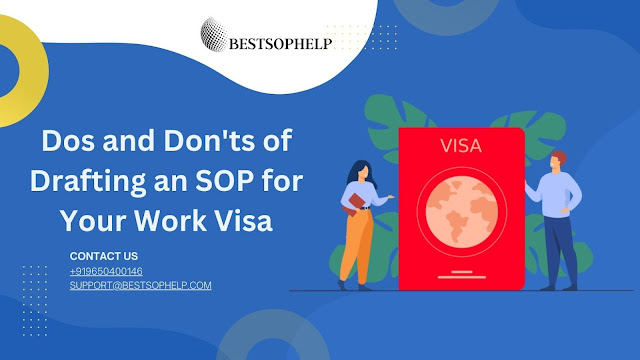Balancing Professionalism and Personal Touch in Your Tourist Visa SOP
Understanding the Tourist Visa SOP
The SOP for tourist visa is a formal document where you outline your purpose of travel, itinerary, and intentions while visiting a foreign country. It is a means to convey your plans and a reflection of your genuineness and credibility. Achieving the right blend of professionalism and personal touch can significantly enhance the impact of your SOP.
The Importance of Professionalism
Maintaining a professional tone in your SOP is crucial as it demonstrates your seriousness and respect for the visa application process. Here's how you can infuse professionalism into your SOP:
A. Clear and Concise Language: Use clear and straightforward language to explain your travel purpose, plans, and financial arrangements. Slang, jargon, and excessively sophisticated words should be avoided.
B. Formal Structure: Follow a formal structure, including an introduction, main body, and conclusion. Use proper salutations and a respectful tone throughout the document.
C. Accurate Information: Ensure that all the information you provide is accurate and verifiable. Inconsistencies or inaccuracies could raise doubts about your intentions.
D. Professional Presentation: Format your SOP professionally, with appropriate fonts and spacing. The paper should be carefully proofread to remove any grammatical or typographical issues.
Injecting a Personal Touch
While maintaining professionalism is essential, adding a personal touch helps humanize your application and gives insight into your genuine intentions. Here's how to incorporate a personal touch:
A. Share Relevant Experiences: If you've visited the destination country before, briefly mention your positive experiences and how they have influenced your decision to visit again.
B. Explain Your Motivation: Clearly articulate why you chose the destination country for your trip. Explain your motivations sincerely, whether it's cultural exploration, attending an event, or visiting friends and family.
C. Personal Anecdotes: Consider including a brief personal anecdote that connects with your travel purpose. However, ensure that the anecdote remains relevant and doesn't overshadow the main purpose of your trip.
D. Emotional Appeal: Express your excitement and enthusiasm for the upcoming trip. Show your appreciation for the destination's culture, history, or natural beauty.
Tailoring Your SOP to the Destination
Different countries have varying cultural expectations and visa application processes. Tailoring your SOP to align with these factors can enhance your chances of success.
A. Research: Thoroughly research the country's culture, values, and customs. This will help you address the visa officer's concerns and demonstrate your awareness and respect for their country.
B. Addressing Concerns: If there are any potential concerns, such as a relatively short trip duration or a lack of ties to your home country, address them directly in your SOP. Provide explanations that alleviate any doubts.
C. Local Etiquette: Familiarize yourself with local etiquette and address the visa officer with the appropriate salutations and titles. This showcases your respect for their culture.
Dos and Don'ts
To sum up, here are some dos and don'ts to consider while drafting your Tourist Visa SOP:
Dos:
- Clearly state your travel purpose and plans.
- Be honest and accurate in all your statements.
- Express genuine enthusiasm and interest in the destination.
- Address potential concerns or discrepancies proactively.
- Use a polite and respectful tone throughout the document.
Don'ts:
- Overuse informal language or slang.
- Provide vague or conflicting information.
- Focus solely on personal anecdotes without explaining your travel purpose.
- Neglect to research the destination's cultural norms and expectations.
- Rush through the drafting process without proper proofreading.
Conclusion
Crafting a Tourist Visa SOP that balances professionalism and a personal touch is an art that requires careful consideration. By maintaining a professional tone while infusing your unique motivations and experiences, you can create a compelling document that impresses the visa officer and reflects your genuine intent to explore a new country responsibly. Remember, each SOP should be tailored to the destination's culture and expectations, showcasing your respect for their values. With these tips in mind, you're well on your way to presenting a convincing case for your tourist visa application.
Visit now: Sop writing services.



.jpg)
Comments
Post a Comment